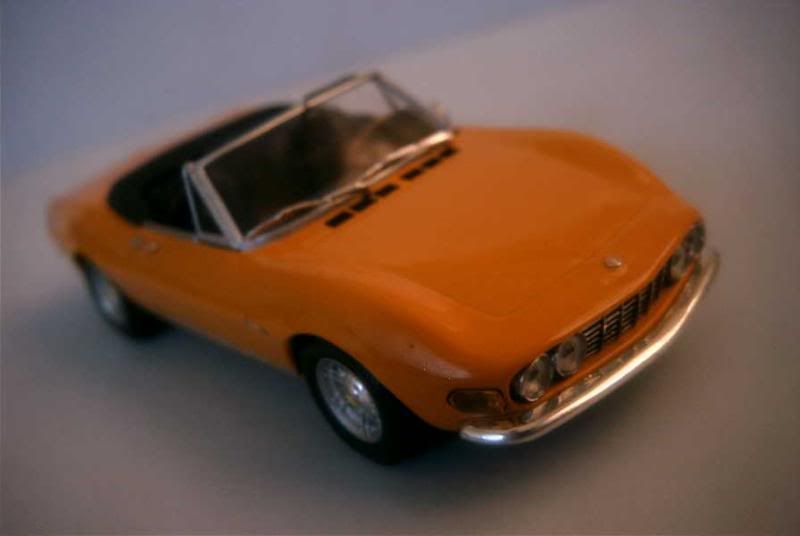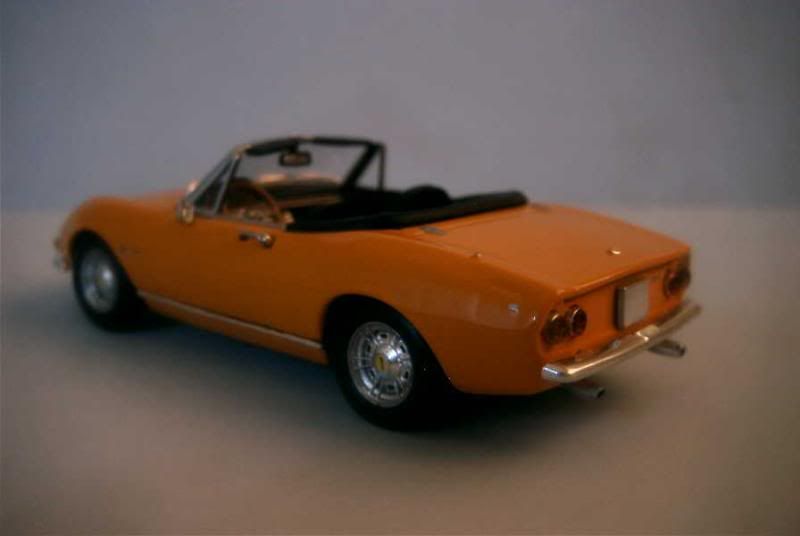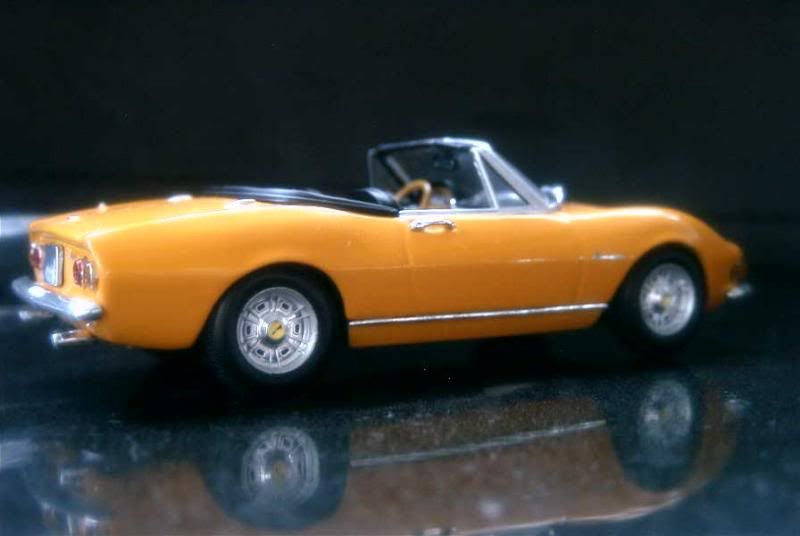A little history
By the second half of the Sixties, Ferrari, already quite busy in Formula One and sportscars, decided to extend its involvement in motor racing even further. The plan Maranello put up was to use the V6 engine powering its Dino road cars to develop a Formula Two open-wheeler. The idea had one flaw: though Formula Ones could be unique machines, rules made Formula Twos closer to production cars from a technical point of view. In particular, their engines had to be based on a road-going car’s block. So far so good. This block would be homologated after being built in a minimum production series. Oops…
Though the Dino had been designed as a lower-cost Ferrari, it was still too exclusive for its V6 to be homologated – five hundred engines built over the last twelve months was the very minimum requirement. Nevertheless, at the very same time Fiat was willing to improve its image by building a more prestigious vehicle than the popular family saloons it was known for. An agreement between those two parties allowed both of them to pursue their own goals.
Dino’s all-alloy, quad-cam V6 would be fitted to new Fiat coupes and convertibles, guaranteeing them both prestige and performance. The relatively large production numbers expected from a company such as Fiat would permit Ferrari’s engine to be homologated. Everyone seemed satisfied by the deal.
Production of the Fiat Dino – the Turin brand wanted to enjoy full publicity from its move, and consequently didn’t looked much for a name – started in the spring of 1966. Fiat also produced the engine, a 2.0-litre block good for 160 bhp, courtesy of three double barrel carbs. Part of the output was sent back to Ferrari in order to power that firm's Dino 206. The other key mechanical parts would also be provided by companies much more experienced in high-performance than Fiat was: ZF sold a 5-speed gearbox, while Girling gave the Dino the very same brakes that the Lamborghini Miura used. As many other Italian cars of the era, the coupe and convertible versions were designed by different companies, and therefore their appearances had nothing in common. The coupe was an aggressive fastback signed by Giorgetto Giugiaro for Bertone, while the more curvaceous ragtop was designed by Pininfarina. This latter one was first to hit the market. Sales were predictably limited, but as an image-builder vehicle the Dino was a success for Fiat.
In early 1969, production of the 2.0-litre Dino was stopped. Its block was replaced by a cast-iron 2.4-litre V6, heavier but more powerful at 180 bhp. Simultaneously, it was fitted with an advanced independent rear suspension – difficult handling had probably been the main critic against the car up to then. Under this updated form, the Fiat Dino was produced until December 1973. And, would you ask, what about Ferrari’s foray into Formula Two? Well, its racer proved very fast, notably when driven by Ernesto “Tino” Brambilla. Alas, it was also terribly unreliable, rarely reaching the finishing line…
About the model
Model: Fiat Dino Spider
Year: 1972
Maker: Minichamps
Scale: 1/43
Distributed by: Minichamps, limited edition - 2,112 pieces
Acquired: brand new, in May 2006, in Manila, Philippines
The usual quality from Minichamps. Up front the model looks particularly good. My rating is 14/20.




By the second half of the Sixties, Ferrari, already quite busy in Formula One and sportscars, decided to extend its involvement in motor racing even further. The plan Maranello put up was to use the V6 engine powering its Dino road cars to develop a Formula Two open-wheeler. The idea had one flaw: though Formula Ones could be unique machines, rules made Formula Twos closer to production cars from a technical point of view. In particular, their engines had to be based on a road-going car’s block. So far so good. This block would be homologated after being built in a minimum production series. Oops…
Though the Dino had been designed as a lower-cost Ferrari, it was still too exclusive for its V6 to be homologated – five hundred engines built over the last twelve months was the very minimum requirement. Nevertheless, at the very same time Fiat was willing to improve its image by building a more prestigious vehicle than the popular family saloons it was known for. An agreement between those two parties allowed both of them to pursue their own goals.
Dino’s all-alloy, quad-cam V6 would be fitted to new Fiat coupes and convertibles, guaranteeing them both prestige and performance. The relatively large production numbers expected from a company such as Fiat would permit Ferrari’s engine to be homologated. Everyone seemed satisfied by the deal.
Production of the Fiat Dino – the Turin brand wanted to enjoy full publicity from its move, and consequently didn’t looked much for a name – started in the spring of 1966. Fiat also produced the engine, a 2.0-litre block good for 160 bhp, courtesy of three double barrel carbs. Part of the output was sent back to Ferrari in order to power that firm's Dino 206. The other key mechanical parts would also be provided by companies much more experienced in high-performance than Fiat was: ZF sold a 5-speed gearbox, while Girling gave the Dino the very same brakes that the Lamborghini Miura used. As many other Italian cars of the era, the coupe and convertible versions were designed by different companies, and therefore their appearances had nothing in common. The coupe was an aggressive fastback signed by Giorgetto Giugiaro for Bertone, while the more curvaceous ragtop was designed by Pininfarina. This latter one was first to hit the market. Sales were predictably limited, but as an image-builder vehicle the Dino was a success for Fiat.
In early 1969, production of the 2.0-litre Dino was stopped. Its block was replaced by a cast-iron 2.4-litre V6, heavier but more powerful at 180 bhp. Simultaneously, it was fitted with an advanced independent rear suspension – difficult handling had probably been the main critic against the car up to then. Under this updated form, the Fiat Dino was produced until December 1973. And, would you ask, what about Ferrari’s foray into Formula Two? Well, its racer proved very fast, notably when driven by Ernesto “Tino” Brambilla. Alas, it was also terribly unreliable, rarely reaching the finishing line…
About the model
Model: Fiat Dino Spider
Year: 1972
Maker: Minichamps
Scale: 1/43
Distributed by: Minichamps, limited edition - 2,112 pieces
Acquired: brand new, in May 2006, in Manila, Philippines
The usual quality from Minichamps. Up front the model looks particularly good. My rating is 14/20.







No comments:
Post a Comment